'No development' in Blue Star Line's Titanic II plans
- Published
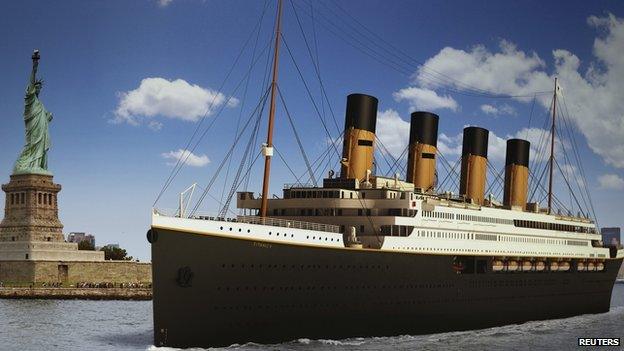
The Titanic II liner project was launched by Australian mining tycoon Clive Palmer
Work on the proposed Titanic II has yet to begin, prompting concerns the project has been abandoned.
Grand plans for the replica liner were revealed in April 2012 by Australian mining billionaire Clive Palmer.
But the build, which was due to start in China at the end of 2013, has not commenced, and other firms involved have said no progress has been made.
Blue Star Line, the firm behind the project, has denied the project has come to a halt.
A spokesman for the Brisbane-based firm, who contacted the BBC earlier, said the project had "just been pushed back with a planned launch date of late 2018."
According to its online news diary, external, the last development on the project was in September 2013, when tests were carried out on a model of the proposed replica in Germany.
'No work ongoing'
The firm appointed Lloyd's Register Marine (LRM) in July 2013 to review key design drawings, calculations and studies for Titanic II.
LRM said: "There have been no further developments involving us since our initial design appraisal work.
"We remain ready to support the project should we be contracted to provide it."
Deltamarin, the Finnish company designing the ship, said its commission related to Titanic II had finished.
A spokesman said: "We have no work ongoing for Blue Star Line."
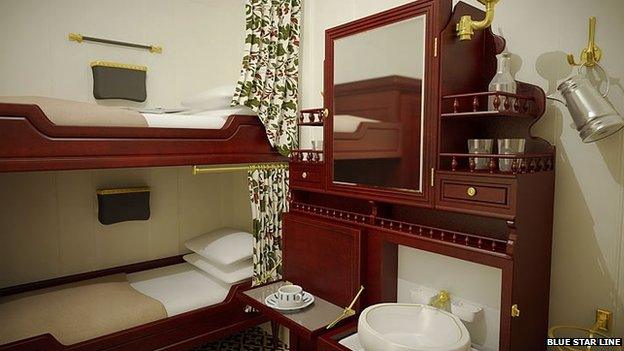
Third class cabins are included in the design of the planned ship
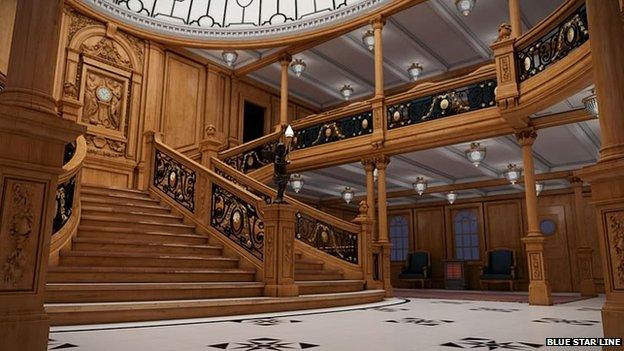
Features of the original ship, such as its grand staircase, were incorporated into early designs
The ship's designs showed it would have similar dimensions to the original, with 840 rooms and nine decks.
It was expected to set sail in late 2016, calling at the same ports as the ill-fated Titanic, including Southampton and New York.

Analysis: BBC South transport correspondent Paul Clifton
This was always a high-risk venture, a flight of fancy by a fabulously wealthy Australian mining tycoon.
The design of Titanic II was intended to be as close to the original ship as possible, whilst conforming to today's safety standards and having modern engines.
There would be second and third class cabins, where passengers would have narrow bunk beds and wash basins instead of bathrooms and balconies with ocean views.
Today's cruise passengers are accustomed to much greater luxuries.

- Published19 September 2013
.jpg)
- Published27 February 2013
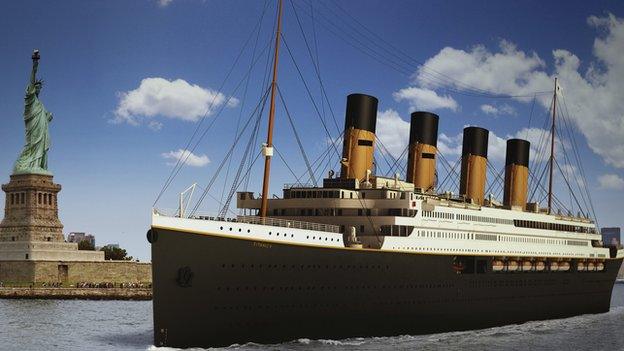
- Published30 April 2012
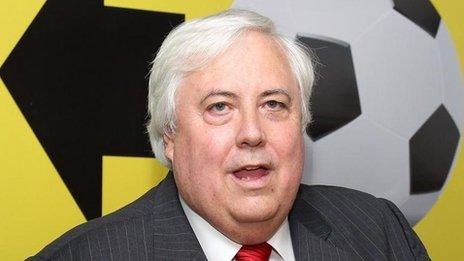
- Published30 April 2012
